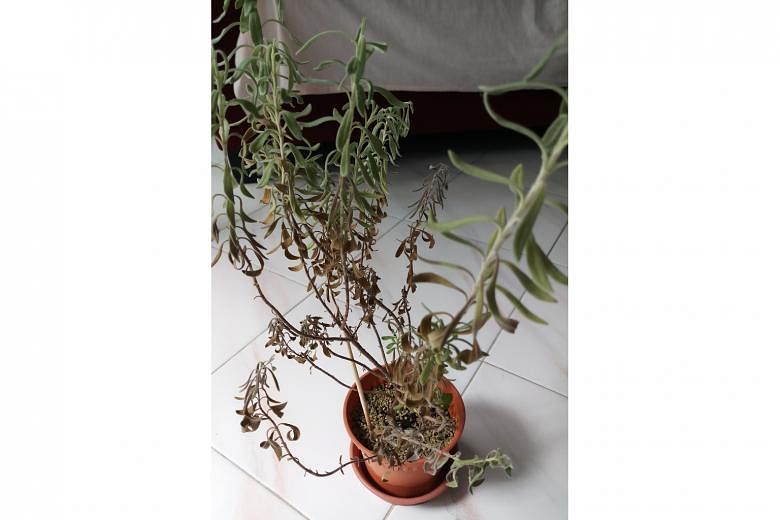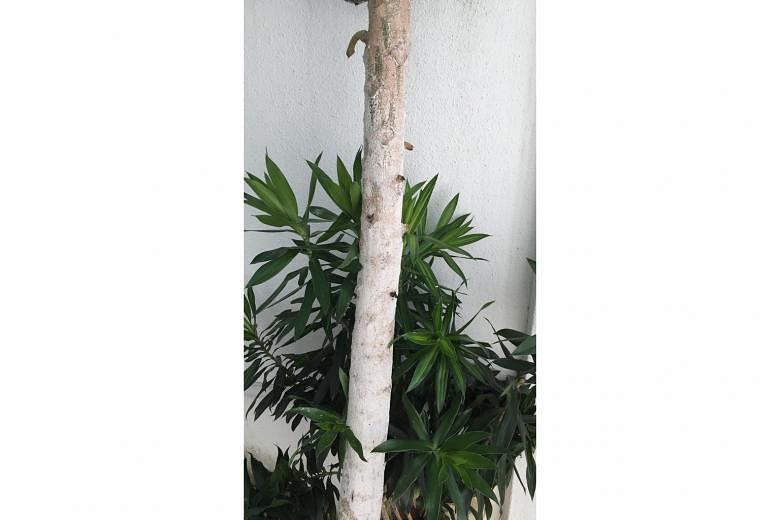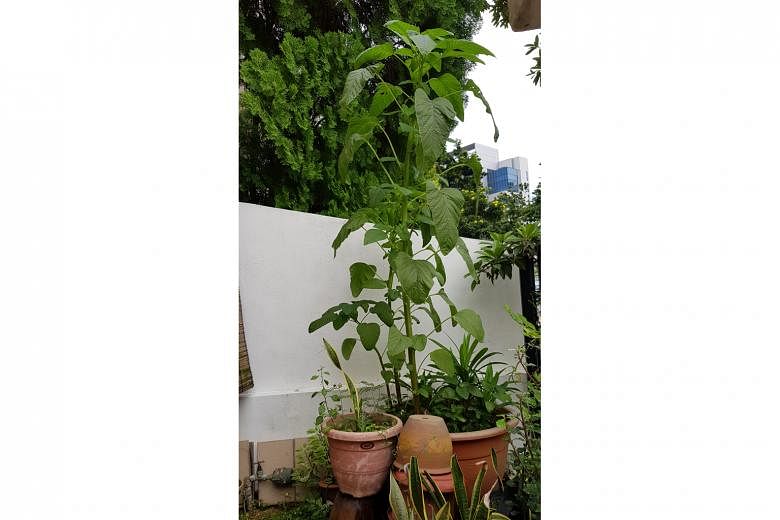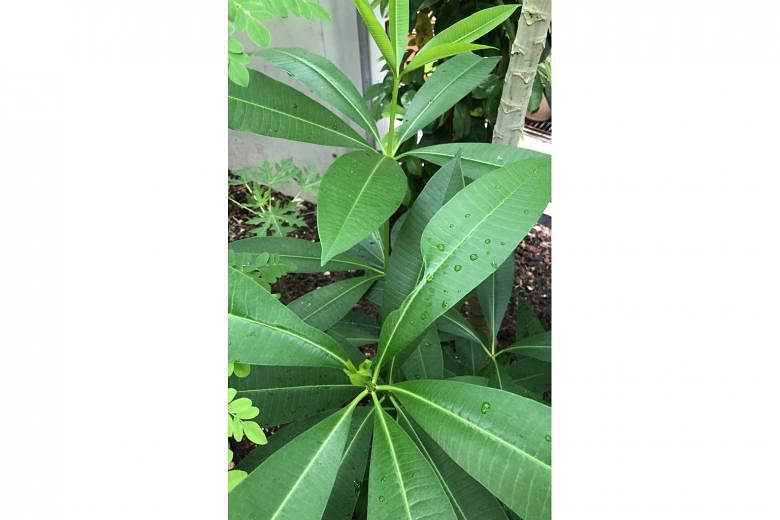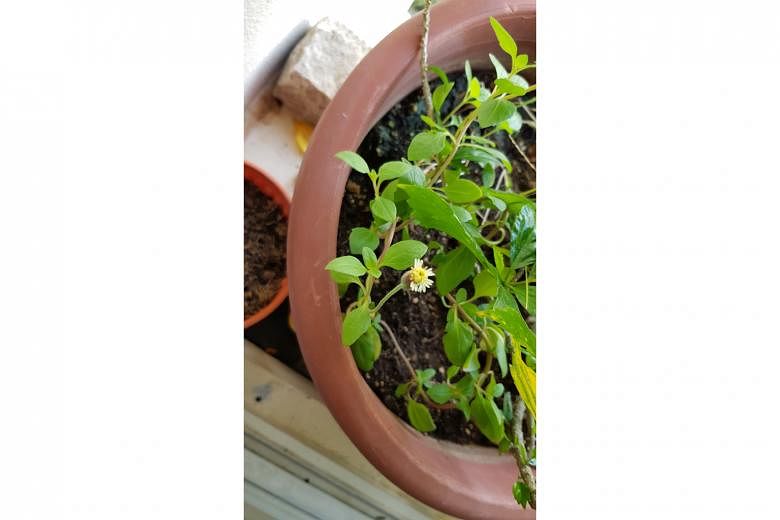Lavender may have been allowed to dry out
I was given this lavender plant, which I placed near my balcony window. There is no sun this time of the year at this location and the leaves at the bottom of the plant are turning brown. How do I save it?
Janice Toon
From the symptoms shown, where there are numerous dried lower leaves along the stem of the lavender, it appears that the plant has been allowed to experience water stress - the lack of water on numerous occasions.
The pot appears to be too small for the plant and the growing media is expected to dry out quickly if the plant has been grown in a sunny spot.
It may be difficult to save this plant. What you can do now is perhaps to move the plant into a larger pot with well-draining media that is suited for growing lavender.
You may want to also take tip cuttings from your existing plant and try to root them to get new plants. An appropriate growing media to start your cuttings would consist of equal parts of peat moss, perlite and vermiculite.
You may find it beneficial to cover the cuttings with a clear plastic cup with several small holes to help conserve moisture.
Manage scale insects with a toothbrush and pesticide
Early this year, my papaya tree had an infestation by insects called white peach scale (Pseudaulacaspis pentagona). I cut the tree down and replanted a new one, which is starting to bear fruit. How can I prevent a similar pest infestation? Is the fruit still edible?
Sandra Foo
Scale insects can be difficult to identify via the naked eye. An examination using the microscope and help from a plant pest entomologist would be required to confirm the species.
Whatever the species, it helps to detect infestations early and take appropriate action.
From the picture, the infestation is quite severe and the usage of potent, broad-spectrum, chemical pesticides may not totally eradicate them and will harm natural parasitoids, making matters worse.
As such, you may want to attempt to use a soft toothbrush to first remove the scale insects. Next, to keep the pest population at manageable levels without compromising the papaya tree's health and vigour, repeat applications of summer oil or neem oil, which suffocates the pests.
A diluted lime sulphur solution can also be used to treat scale insect infestations. But care must be exercised to apply this only during the cooler part of the day and not to apply it with oil-based pesticides.
Complete coverage of the plant is essential to ensure the pests are killed.
The fruit is edible after the scale insects have been properly washed away.
Plant is Redroot Pigweed leafy vegetable
Can you help identify these tall plants? They grew almost 2m in a month in my pot which has pandan. The leaves look like spinach and the thin stems of the leaves look like those of caixin. The older leaves are larger than the palm of an adult and about the size of half an A4-sized paper. The leaves and stems look edible and suitable for stir-frying.
Cindy Yim
The plant is the Redroot Pigweed and its botanical name is Amaranthus retroflexus. It is related to the Chinese Spinach, also known as bayam (Amaranthus dubius).
The leaves of this plant are best eaten young and should be thoroughly cooked to remove the calcium oxalate in the leaf tissue.
The plant grows as an annual, where it flowers and produces seeds that lead to subsequent generations of plants.
Sapling is likely a species of Alstonia
I found this plant in my garden. What is it?
Lily Lim
The plant is likely the sapling of a species of Alstonia. Alstonia grow as large trees and, in Singapore, two species - namely, Common Pulai (Alstonia angustiloba) and Indian Pulai (Alstonia scholaris) - are commonly planted in the streetscape, parks and gardens. Their seeds are easily dispersed by wind.
To distinguish between the Common Pulai and Indian Pulai, pluck an entire leaf with the leaf stalk intact.
Next, try to find a small, sharp protrusion called a stipule at the end of the leaf stalk. If there is one, the sapling is that of the Indian Pulai.
The sapling eventually grows into a tree, so decide if there is ample space to let yours grow and whether you are willing to maintain it later on in your garden.
Kancing Baju a common weed in Singapore
The plant started growing in my pot of hibiscus. What is its name and how do I take care of it? However, I do not want it to take over the pot and affect the growth of the hibiscus.
MVS Kiran Kumar
The plant is commonly known as the Coat Buttons or Kancing Baju. Its botanical name is Tridax procumbens and it is a member of the daisy family (Asteraceae).
Its seeds are dispersed widely by wind and the plant often occurs as a weed in wastelands and planted areas like garden beds and flower pots.
The plant supports a range of biodiversity in Singapore. Its flowers provide nectar for butterflies and bees, which are important pollinators for the flowers in the urban landscapes.
• Have a gardening query? E-mail it with clear, high-resolution pictures of at least 1MB, if any, and your full name to stlife@sph.com.sg. We reserve the right to edit and reject questions.
• Answers by Dr Wilson Wong, an NParks-certified practising horticulturist and park manager. He is the founder of Green Culture Singapore and an adjunct assistant professor (Food Science & Technology) at the National University of Singapore.
